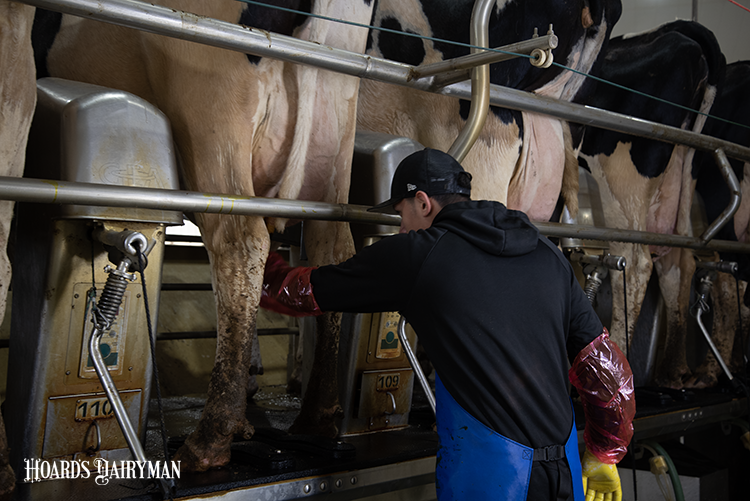
“Efficiency is where it’s at right now. We’ve got to make sure every dollar invested in feed works for us,” said Steve Martin, a nutritionist who works with dairy farms across the country, on the December 14 Hoard’s Dairyman DairyLivestream. His words come as no shock to farmers dealing with exceptionally high costs for feed, fuel, fertilizer, and other farm inputs.
So how do we make sure we are producing milk efficiently? “Feed conversion is the best way to measure that,” Martin described.
Feed conversion, or feed efficiency, can largely vary from cow to cow based on stage of lactation as well as genetics. With that in mind, Martin emphasized that milking the right cows makes a big difference in how your feed inputs are utilized.
“The feed efficiency killers on a dairy are late lactation cows that eat a lot of feed and don’t give a lot of milk,” he reminded. As a whole, dairy farms have made progress on having fewer of these cows because we know how to feed better and get cows pregnant in a timelier manner. It is still an area worth taking a look at, though Martin also noted that these cows will produce more components, so they may be making you more money than you think. Calculate breakeven costs on individual cows and do some string sampling, he recommended. Be sure to use accurate milk prices that adjust for actual pounds of fat and protein.
Those breakeven calculations may also reveal where there is opportunity for some early drying-off or additional culling, Martin continued.
On the flip side, the cows that are going to have a high feed conversion rate are those that are peaking and maintaining that peak. That has its basis in a desirable lactation cycle, but it also extends beyond that. For cows to be persistent, they need to be healthy, comfortable, and meeting their maintenance needs.
“Almost every good thing you do for a cow with a well-balanced ration — keeping her comfortable, getting her pregnant — all those things are going to allow you to win on feed conversion and feed efficiency,” summarized Martin. That’s what will make the difference as feed input costs remain high for the foreseeable future.
To watch the recording of the December 14 DairyLivestream, go to the link above. The program recording is also available as an audio-only podcast on Spotify, Google Podcasts, Apple Podcasts, and downloadable from the Hoard’s Dairyman website.
The next broadcast of DairyLivestream will be on Wednesday, January 11 at 11 a.m. CT. You can sign up here now. Registering once will sign you up for all future events.








